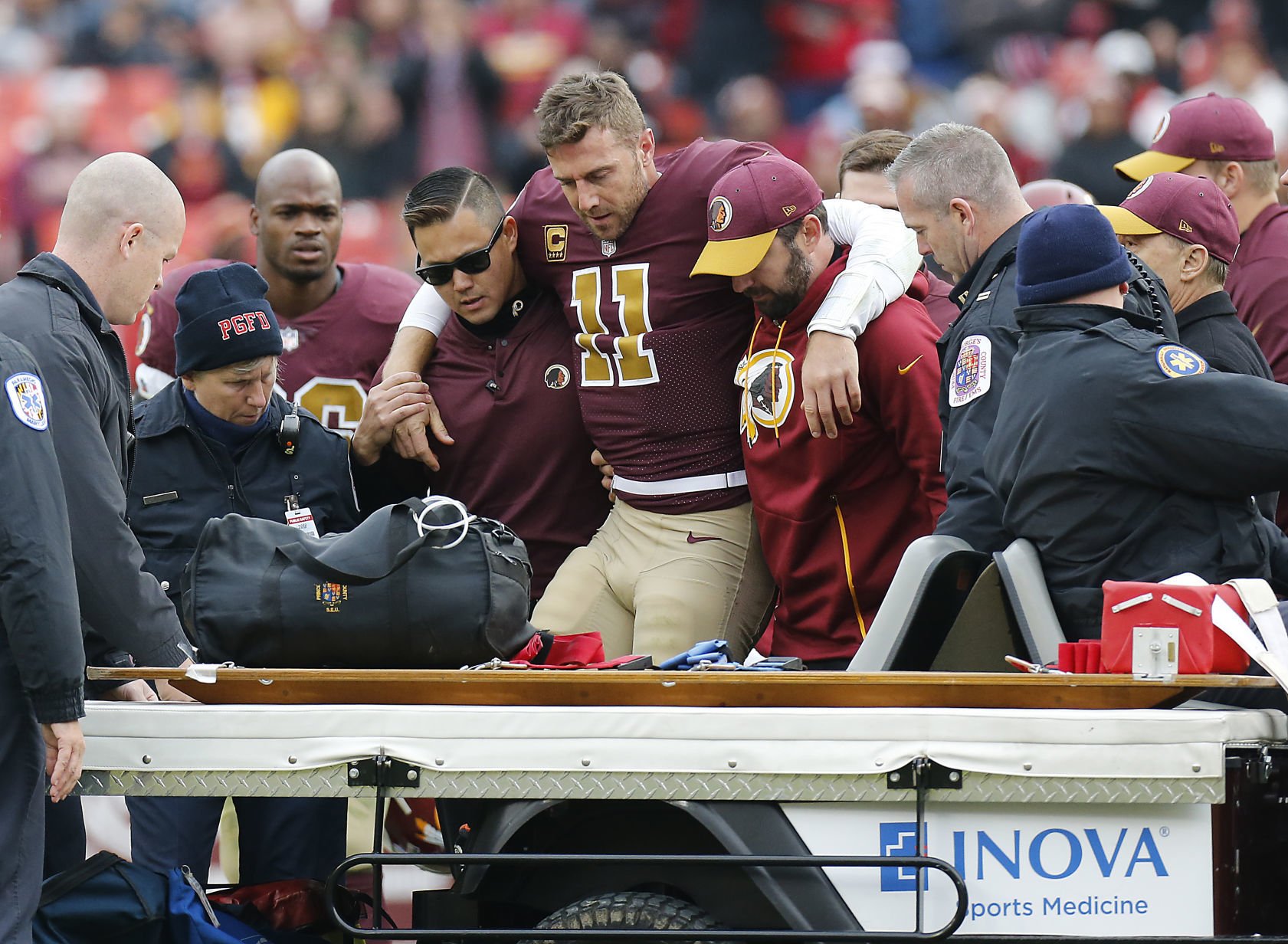image.png You have insufficient rights to see the content.
ESPN's Alex Smith documentary pulls no punches in showing a gruesome injury -- and courageous recovery
By MICHAEL PHILLIPS
Richmond Times-Dispatch
Apr 29, 2020
It’s clear from the subject matter that a documentary about Alex Smith, the Redskins quarterback who suffered one of the most gruesome injuries in football history, is going to contain some graphic footage.
Still, try as you might, it is impossible to fully brace yourself for the impact of seeing, on screen, just what Smith’s leg looked like after undergoing surgery to repair multiple fractures sustained in a 2018 game.
That visual, about 35 minutes into ESPN’s excellent “Project 11” documentary, kicks off a series of images, each somehow more gruesome and stomach churning than the last, as doctors race to save his leg.
This is no circus sideshow, though. The images are crucial to the telling of Smith’s story, which was put in the capable hands of ESPN reporter Stephania Bell.
The physical pain is accompanied by emotional pain, as Smith’s wife, Elizabeth, discusses with a physician whether the leg should be amputated.
The hour-long program, which airs Friday night at 7:30 p.m, is ESPN at its very best — using its access, and trust with athletes, to take us places we’d never go otherwise. Bell said Smith wanted to make sure his story was told as authentically as possible.
image.png You have insufficient rights to see the content.
“Part of the authenticity of the piece was people really understanding where he had to come from and how bad it got,” Bell said. “I think the only way you can really appreciate that is to see the pictures. And Alex wanted to share that. It’s tough for the viewing audience, you know not everybody will want to see those things. That’s why there are graphic warnings. But it’s important to convey just how bad off he was.”
The first half of the program is devoted to Smith’s rise from lightly recruited quarterback to NFL star, building up to his trade to Washington and the injury.
While longtime fans will appreciate seeing home videos and other archival footage, it’s the rehab scenes that set this program apart. Smith has been mostly private since the injury, making “Project 11” all the more revelatory.
We learn that he had a portion of his quad muscle from his working leg transferred to the other, and that he went to The Center for the Intrepid, a military rehab facility in San Antonio, to receive post-surgical care.
Mostly, though, we learn just how dire things got once the wound was infected (it was exposed on the football field), and Smith’s body entered sepsis.
“I will never, ever forget this, as the surgeons walked out, they said, ‘We’re in life-saving mode now. And leg-saving mode, but it’s in that order,’” Smith’s mother, Pam, said in the film.
From there, Smith gradually works his way back to being able to walk, a triumph that was not a given when Bell started the project in early 2019.
Smith has even grander goals and continues to work out at Redskins Park regularly, but it’s clear from the film that how far he’s come is already an amazing achievement.
Bell said attending multiple rehab sessions and appointments with Smith, she was struck by how he threw himself fully into his recovery, even learning the medical terms the doctors were using.
She said some patients are content to be told what to do, but Smith wanted to learn the why.
“I don’t really know if there’s anyone else who has the same outcome with this injury and the consequences of it,” she said. “Alex is one of the most determined, driven people I’ve ever met, but in the most quiet and humble way.”
Bell also credited Elizabeth with keeping him well cared for at home, even as she raised the couple’s children.
“In the early days, she had to process everything,” Bell said. “He wasn’t coherent.”
Just as “Hard Knocks” gave viewers a peek into NFL meeting rooms, “Project 11” gives a look at a place that’s equally familiar to many of the league’s players, the rehab room.

The league would probably rather fans not see this side of the sport, but that makes the documentary all the more important. It also humanizes Smith, who millions of people will be rooting for after seeing his incredible perspective and unmatched drive throughout his recovery.
Michael Phillips wrote: